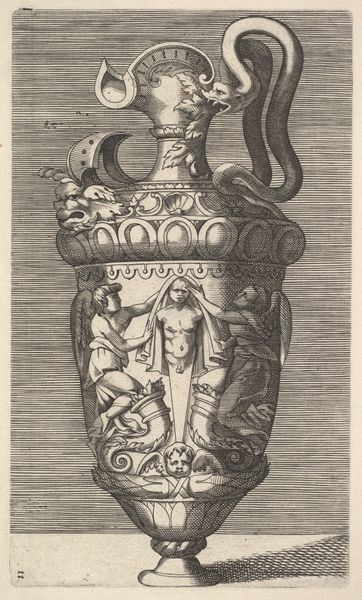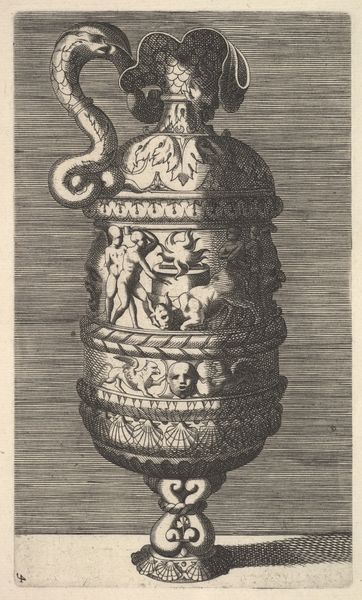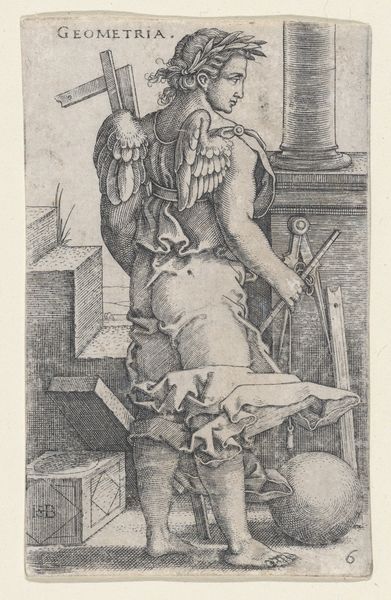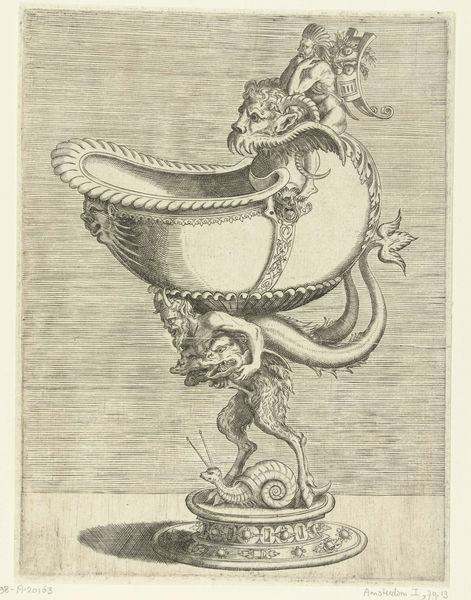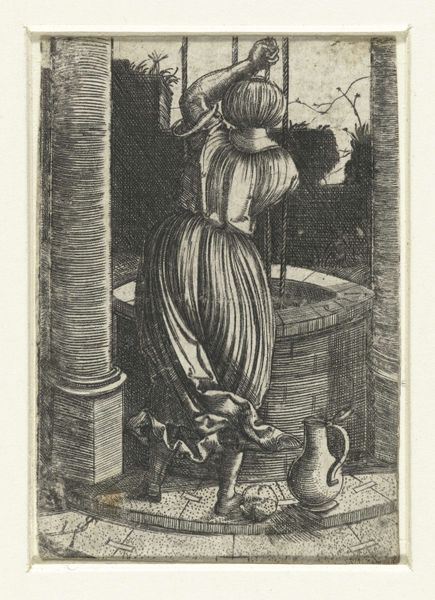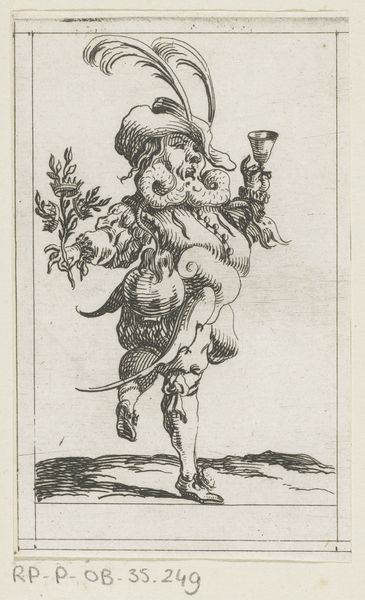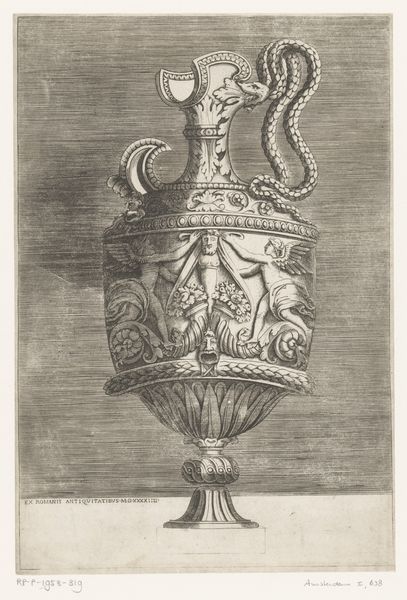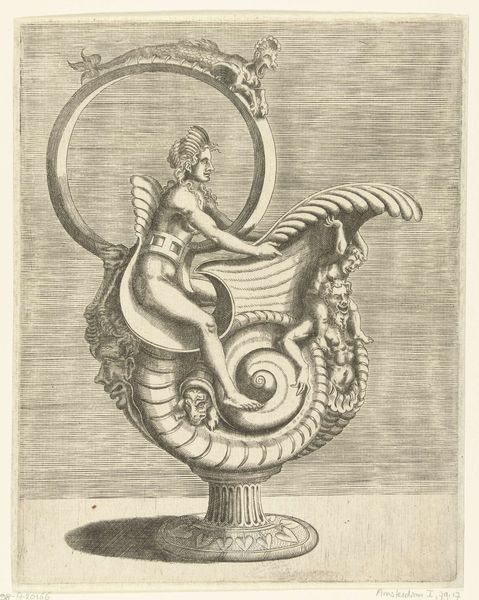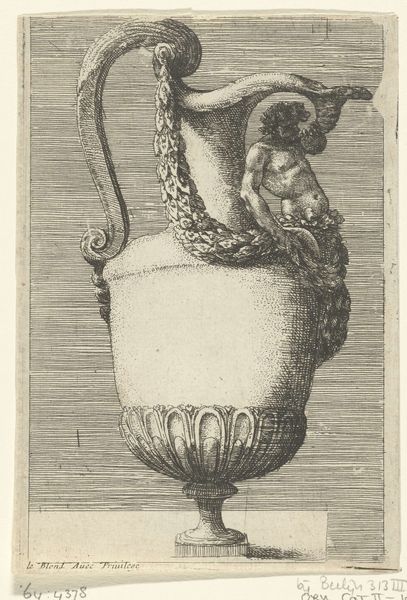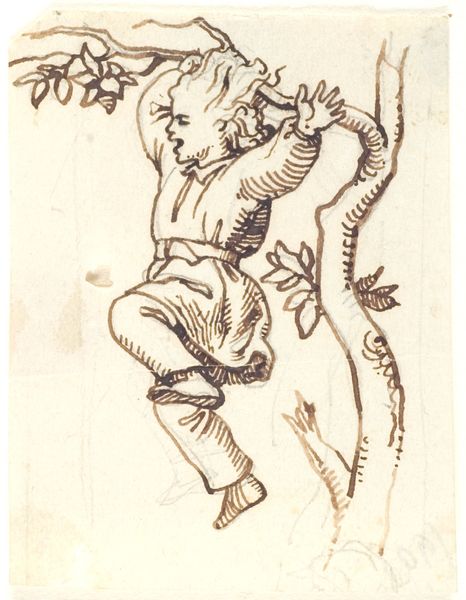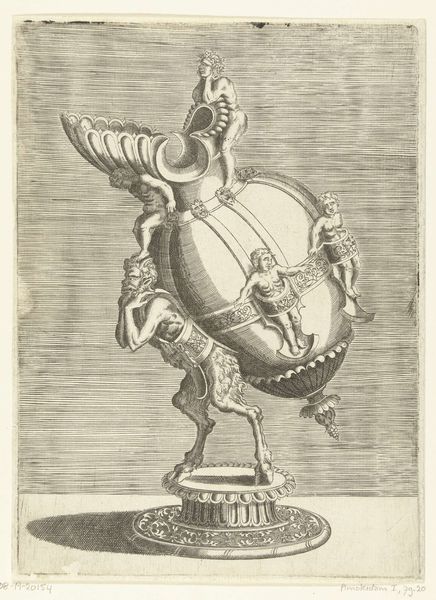
print, engraving
# print
#
caricature
#
caricature
#
history-painting
#
italian-renaissance
#
engraving
Dimensions: height 267 mm, width 185 mm
Copyright: Rijks Museum: Open Domain
This print from 1553 by Enea Vico depicts an ornate vase, rendered through the precise technique of engraving. Notice how the stark contrast between the dark lines and the white paper creates a striking visual effect, emphasizing the vase's complex form and intricate details. Engraving, a process of incising lines into a metal plate, then inking and pressing it onto paper, was a labor-intensive method that allowed for detailed reproduction and dissemination of images. The vase itself, with its grotesque spout and classical motifs, reflects the Renaissance fascination with antiquity. Vico’s choice of engraving, rather than other printmaking methods, speaks to a desire for precision and control, mirroring the vase’s elaborate decoration. The medium allows for the distribution of luxury goods to a wider audience. The print, therefore, becomes an object of consumption in its own right. By focusing on materials, making, and historical context, we gain a richer understanding of this print, challenging the traditional boundaries between fine art and craft.
Comments
No comments
Be the first to comment and join the conversation on the ultimate creative platform.

